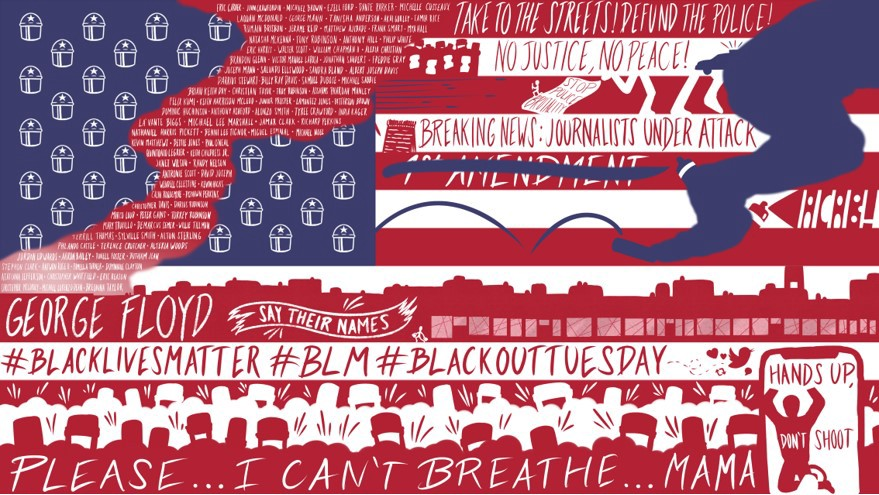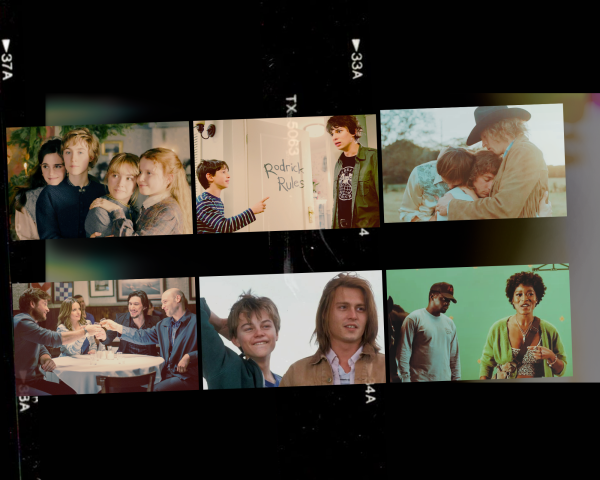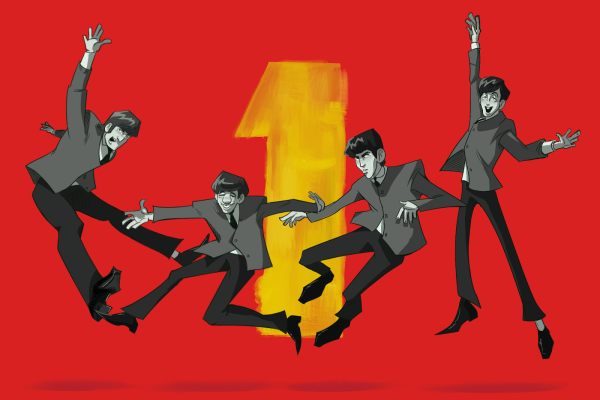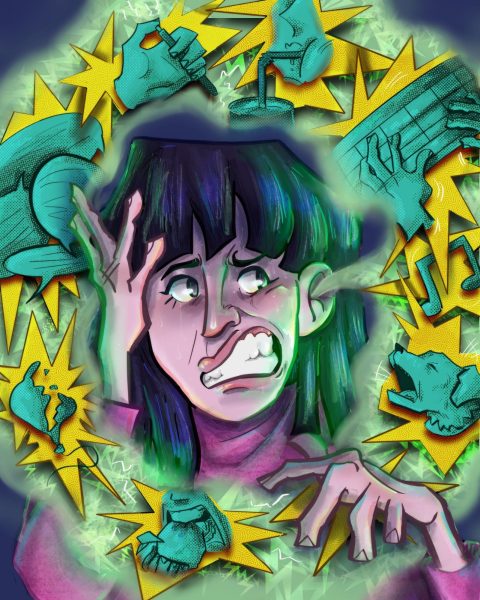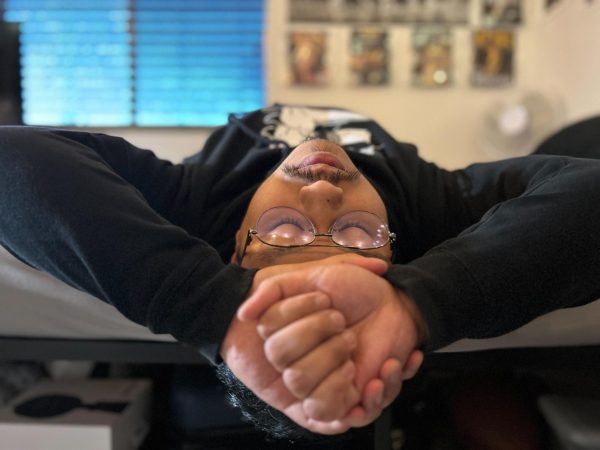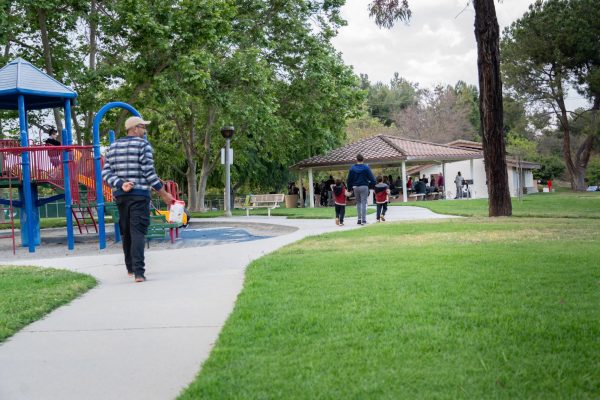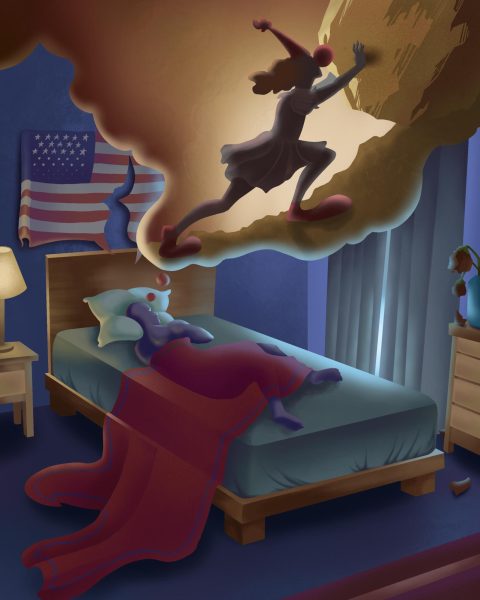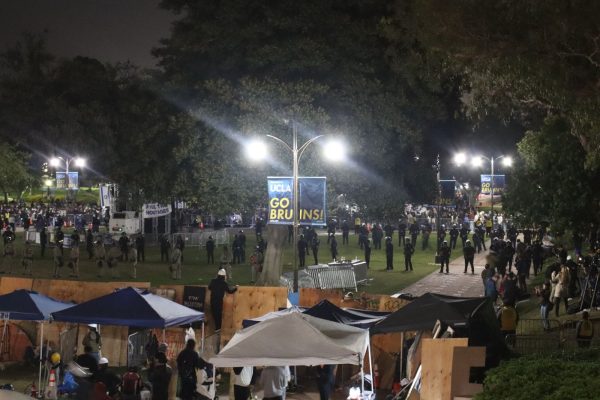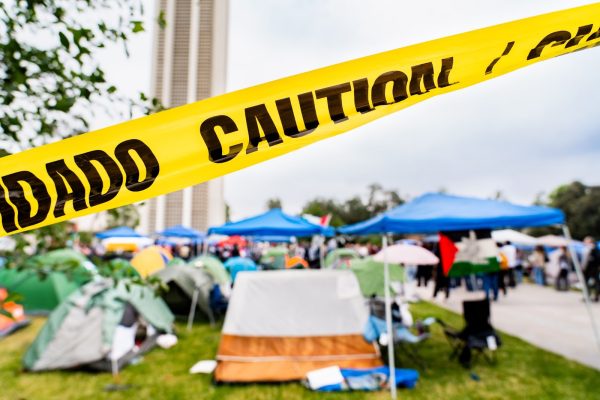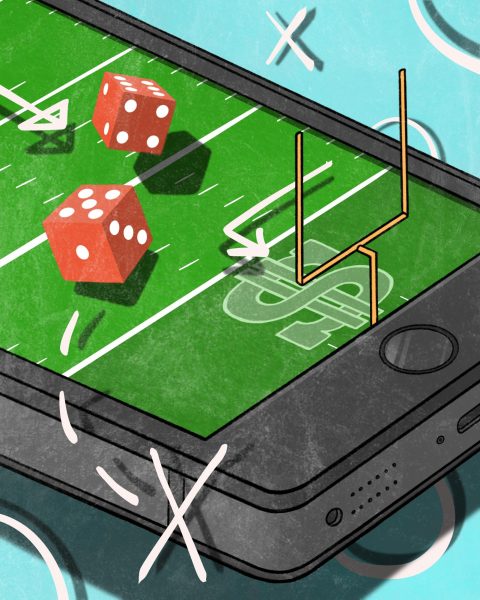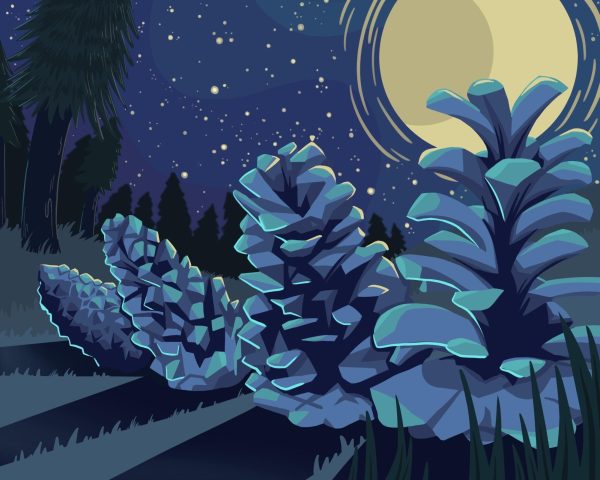The Damage is Done and the Revolution Has Just Begun
The events that followed George Floyd’s death have literally shaken our country to its core.
What has been seen cannot be unseen.
After watching all of it play out on national television and social media — it was hard to get the images and sounds out of my mind. I would close my eyes and see images of flash bombs, hear sounds of the screams from people who were being beaten, tased, and gassed. The rallying cry of protesters chanting “no justice, no peace,” and “hands up, don’t shoot.” I can recall the screams of journalists frantically yelling, “I’m with the press!” and an angered response from an unidentified police officer saying, “I don’t care who you’re with.” I could see the frustration and outrage from every protester who cried out for justice. Who was sick and tired to see another black life lost. I could see fear and anger in law enforcement’s eyes as they mowed down a crowd of demonstrators with their weapons in hand. I could see the pent up rage in the violent acts of the rioters. The ones that have most likely been robbed their whole life and now say, “times up — it’s your turn.”
It’s been hard to focus on our personal lives when all we could do is watch the world burn, right outside our windows. Not to mention — we are still in the middle of a deadly pandemic — how much more can we take?
The death of George Floyd has sparked up a global fire that no one predicted. Floyd was arrested in Minneapolis on May 25, for allegedly using a counterfeit 20 dollar bill to buy a pack of cigarettes. While being detained, former Minneapolis officer, Derek Chauvin, kneeled on Floyd’s neck for 8 minutes and 46 seconds. The incident recorded by a teenage bystander — depicted Floyd wailing and pleading that he could not breathe as he called out “mama” before he died. We’ve all seen the video, whether once or multiple times — it’s horrific to watch.
To add insult to injury, what has manifested from Floyd’s death has forced our society beyond unrest and outrage. Some have marched to the streets consistently; some have resorted to crime, others have become fearful and are ready to exercise their 2nd Amendment rights to protect their houses and communities.
So much has happened in the past three weeks. The results have triggered the long-standing debate on systemic racism and police brutality. Furthermore, our democracy and constitutional rights have been breached, compromised, and abused. The conversation is amongst politicians, public officials, corporations and has even reached the dinner tables of families across America.
We must discuss and learn from these events — and above all else — we must never forget.
Our 1st Amendment rights have been violated.
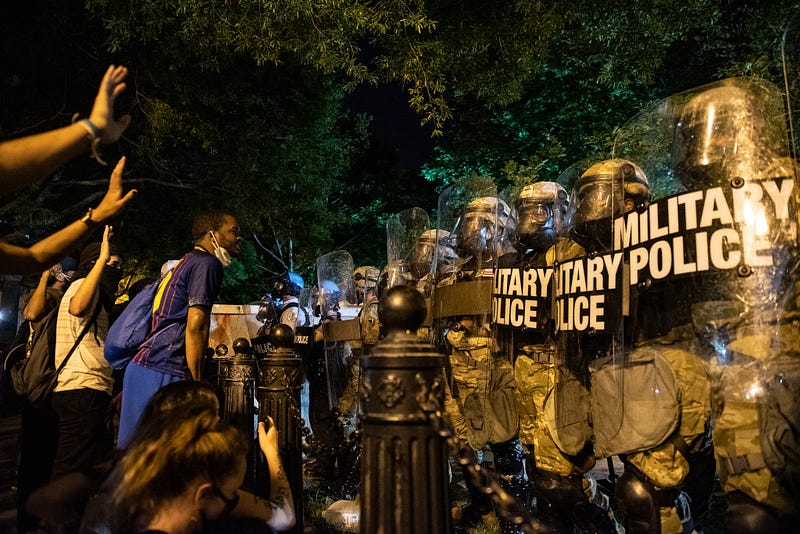
Protesting has long been a tradition with American culture that stretches back generations. It is a powerful weapon of change — the type of change that has shaped the world as we know it today. They draw attention to critical issues, injustices, and other major events. Protests can be found in nearly every political and social movement of the past century. Our right to protests helps us speak out, challenge the status quo, and make an impact on shaping the world.
Like religion and freedom of the press — our rights to protest are protected by the First Amendment and cannot be compromised. Without this fundamental part of our democracy — necessary changes would not have been made. Women wouldn’t be able to vote and segregation and discrimination would be prevalent based on race, sex, religion, and sexual orientation.
Freedom of the press has been breached as well. As I write this, there have been 283 reports of journalists being attacked by police while covering the protests across the country. Many accounts from journalists include being teargassed, beaten up, shot at, and arrested. Among them, some have sustained severe injuries. A photojournalist named Linda Tirado was hit with a tracer round in the face, which resulted in the loss of sight in one eye.
When did it become illegal for reporters to do their jobs?
When did reporting on the scene become a physical threat to law enforcement?
It appears that some of these attacks by law enforcement were targeted towards journalists. There are dozens of videos of journalists with their press badges in hand — clearly identifying themselves only to be met by officers purposefully firing projectiles at them anyway. Or in the case of Omar Jimenez, who was arrested on-air while reporting in Minneapolis.
It’s scary to think that we live in a country where protesting for civil and human rights can be deemed unlawful at the drop of a hat, only to be followed by a brigade of mayhem and violence. Or that, our civil liberties can be tossed out the window in a full-scale assault on the First Amendment rights we are inherently due. These actions are the antithesis of what this country stands for.
Protestors, Looters and Rioters have become a synonymous term.
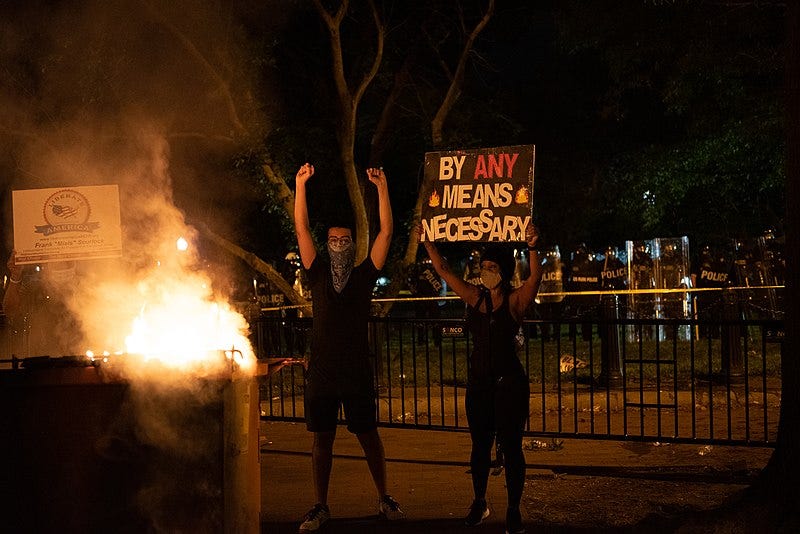
For the first time in my life, most of the nation is on the same page about a disgusting act of police brutality — yet so divided when it comes to how we protest. When the protests started up, we all saw videos of a Target in Minneapolis that had been ransacked by looters, with depicted images of broken windows, empty aisles, and random people walking out of the store with as many goods as they could carry. The ball began rolling, and others cashed in on the opportunity. The astonishment continued as we watched the Third Precinct police station set ablaze as rioters gained entry right after officers fled from their post. From there, that civil unrest began to spread like wildfire amongst other states. For about four days straight, most metropolitan cities appeared to be lawless, until mandated curfews were put in place.
These events became the spotlight of the protests and resulted in heavy criticism by politicians and law enforcement. Coincidentally, since our fine president utilized all 280 characters of a tweet to rant and shame the “Thugs” who were dishonoring George Floyd’s memory, the narrative of the protests continued to change drastically. Some have disapproved of the protests saying that it incites violence, and they encourage the use of militarization to “dominate the streets.”
We have three different groups involved. Protesters, rioters, looters. They are all different and have distinguishable motivations. Yet, all three have become equal in the eyes of some — all wrapped up under the same umbrella.
Maybe it’s because all parties involved have their eye on the same target?
A government and system that has often neglected their needs as a people and does nothing to spark real change for an unjust society. Because a social contract has been broken, therefore all is fair in this game of love and war. Just a thought.
The narrative shifted from “Thugs” to agent provocateurs to a far-right extremist group. Eventually, it landed on Antifa — a left-wing extremist organization — as the cause for the incited violence. However, there is little evidence that confirms Antifa’s involvement as the driving force of the criminal activity. But one thing is for sure, protest organizers have condemned and disavowed opportunistic looters and instigators of violence.
These protests brought thousands of people together. Most of the demonstrations were peaceful until some protesters were retaliated against by the police. It’s interesting to think that the actions of the protesters and police tend to reflect each other.
We have observed this over the past few weeks — as soon as rubber bullets and tear gas attack the peaceful protesters — some of them fight back. However, a small minority of the protests have become violent and destructive. Those who participated in a peaceful march were not the same ones that looted later on. It’s also important to consider the news media’s involvement with the coverage of the protests — and what some outlets chose to focus their attention on — and how the American public perceived it.
But why are people hijacking the cause and instigating such savagery? First of all, looters struck while the iron was hot because they wanted free goods. Some argue the destruction is an attack on our capitalism, as large corporations have been known to exploit minority communities. Unfortunately, small businesses received a brunt of the rage, so the message got lost in violent translation. This shows, destroying property is not the most efficient way of protesting.
Second, rioters aren’t looking for pity; they have varied motivations and a lot of times, nothing to lose. Riots do not appear out of thin air — it’s a culmination of tension that brews over a long period of time — in this case, seeing yet another black man dead at the hands of the police. This type of oppression, corruption, and mismanagement by our law agencies causes some people to feel like they have no other options.
Riots show a brief look at violence in it’s rawest and dirtiest form. It’s often a desperate response from those angered and distressed. An outcry that says — what was done before isn’t working. From the civil rights movement to the Stonewall riots, one can argue that some of the most pivotal moments of change in the United States have been born out of violent acts of desperation.
What has shaped our country’s social movements was a response to the grievances heard on the streets of America — whether through violent or nonviolent means.
We all know that violence is never the solution to the many problems that face us. Peaceful protesting has its own level of forcefulness that can make a difference and pressure those in power to change the necessary policies. Unfortunately, there are some out there who need a reason to rage against the machine — for lack of better words. As if they are owed something for all their struggle and pain.
It’s human nature to want to distinguish the good guys from the bad, especially when it comes to evaluating protests — and through this evaluation — the point of the message gets lost. But, we cannot confuse or blur the lines between the ones who are peacefully calling for change and the ones who have taken advantage of the movement to cause lawlessness and disorder. We must recognize that this is not an excuse to discredit the movement. It doesn’t take away from the real cause at hand — it’s about justice, equality, and holding the ones in power accountable for their actions.
Widespread calls for police reform.
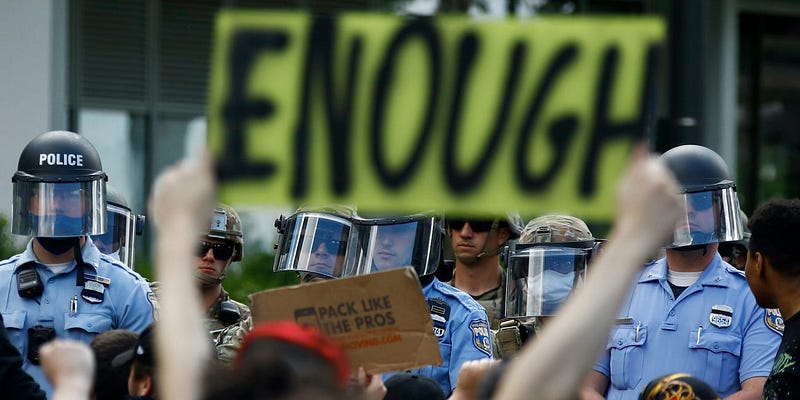
During the thick of the protests, many across the U.S. captured some of the most comprehensive videos of police brutality. And it wasn’t just one isolated incident. It was everywhere.
Cops in riot gear hit the street in the most intimidating fashion — as they waited eagerly for a signal to let loose. Based on eyewitness accounts, it appeared to be a similar routine of occurrences throughout numerous cities in which a protest would start peaceful, but end in violence and dozens of arrests. Police behavior and group psychology went hand in hand.
The causes of such violence were unlawful assemblies, violations of mandated curfews, or the few outliers who antagonized the cops with their actions. Then out of nowhere, the police unleashed on crowds like it was a scene out of an apocalyptic movie. In gross displays, the police did not spare anyone with their violent acts of delight.
It’s unbelievable to think a protest against police brutality — resulted in more police brutality. Excessive force by law enforcement is profoundly disturbing — it’s unfair, unjust, and unconstitutional. Furthermore, it primarily impacts minorities the most.
More than 1000 people are killed at the hands of law enforcement each year. Although 50 percent of the victims shot by police are white, statistics show that when looking at police killings per million people, black Americans are more likely to be killed by police officers than any other race. Blacks account for almost 13 percent of the U.S. population but are murdered at more than twice the rate of white Americans. Additionally, there is a disparity among the Latino population — that needs addressing as well.
Critics argue that Blacks commit at higher crime rates; therefore, we should expect a higher number of individuals to be killed or incarcerated. However, context lies behind these rates as there appears to be an adoption of problematic policing policies within many law enforcement agencies.
Blacks are 3.7 times more likely to be arrested for marijuana possession and have a higher rate of arrest for drug abuse than white Americans, even though the survey shows drug use at similar levels. Studies also show that Blacks are three times more likely to be pulled over and searched in a traffic stop compared to white Americans, even if there is no probable cause.
Aggressive policing styles have a higher probability of leading to rapid escalations toward the use of deadly force. Most deaths or violent encounters usually do not occur while preventing a clear and present danger. But it is more likely to be while — Blacks are being taken into custody, during a routine traffic stop, selling loose cigarettes outside a liquor store or sleeping in bed.
While the abuse of power and violence affects all racial groups, we have fundamental flaws in our justice system and law enforcement agencies.
The police are feeling attacked right now. The whole world is watching and recording the sinful deeds of the “bad apples.” Its known that policing is dangerous, psychologically stressful, and an unenviable job.
Research shows that officers are at high risk of stress-related illnesses such as heart problems, post-traumatic stress disorder, insomnia, and suicide. Cops get to see things that most people will never have to see. It’s the kind of job that isn’t for everyone, and frankly, not everyone should be a cop.
Police officers are people, too. They are people first. They come from all sorts of families and have all types of baggage that they carry with them — like the rest of us do. No one is immune from problems — no matter what your job is.
But — and this is a big but — they are citizen-servants and protectors — for the people — paid by the people. Reform is needed and long overdue. The vetting process should be stricter. It shouldn’t be harder to get a cosmetology license than it is to become a cop.
Law enforcement training needs to be more robust. A 2006 report found that officers receive about 111 hours of firearms and defense training and about 11 hours of diversity and human relations training. And about eight hours in conflict management.
The amount of adrenaline and stress law enforcement is under can be mentally taxing, especially when it comes to being in a job that is supposed to serve and protect. Their emotions and anger should not supersede human life, should not incite more violence, and should not infringe on others’ rights.
Legislation proposals have begun, which could bring a full range of reforms to the police departments across the country. Such as the Justice in Policing Act of 2020, which would prohibit the use of chokeholds, ban no-knock warrants in drug-related cases, reduce the legal standards to prosecute for police misconduct and create development and training programs to establish best practices.
Others have argued to defund the police — which sounds scarier than it is. Ultimately it means removing some money from local and state police budgets and reinvest that into communities and social and mental health services. Why? Because a lot of times, police officers are doing more than what is required of them, mainly because they haven’t been trained to do so. Such as performing social work and welfare checks, responding to drug overdoses, mental health crises, and handling homeless services. The idea is to have these kinds of issues dealt with by trained specialists in social work, drug counseling, or education, to mitigate these issues.
There are others out there that would rather disband the police altogether. However, realistically, defunding is simpler than dismantling and could potentially work on a grand scale. But let’s be honest, defunding the police is a bigger task than it appears on paper, and it’s opposed by many citizens across the country — despite their political party of choice. This topic is very controversial to say the least.
What we do know is that violence begets violence. When the cops attack, it is more than likely that people will go into an automatic fight or flight mode.
We are in an age where filming the cops has become second nature, and that comes at a cost. But non-violent acts such as unlawful assembly and violation of curfew mandates do not warrant aggressive force.
Maybe the answer is to invest more in law enforcement sectors, so that the proper screening and training can occur. Maybe the answer is to defund. One thing is for sure — the status quo cannot continue to exist.
250 years of racism and nothing has changed. This is America.
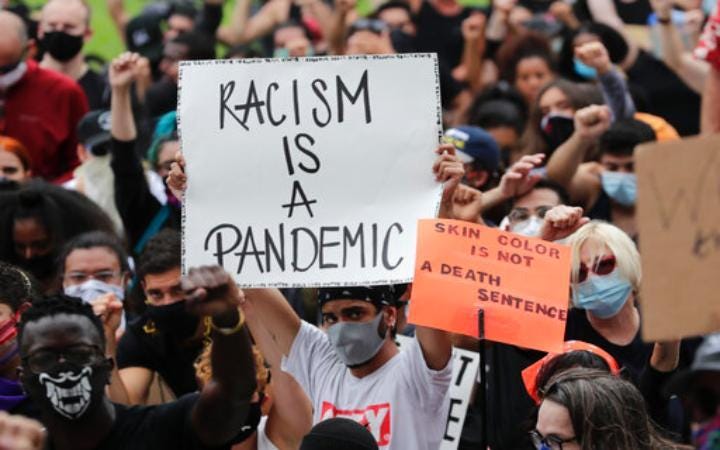
Black lives mattered long before George Floyd was murdered. The movement started in 2013, following the acquittal of Trayvon Martin’s murderer, George Zimmerman. It was a call to action to say Black people are not dispensable. Each one of us matters.
Prior to George Floyd’s death, countless names fell victim to violent acts of force — but this particular instance has opened the eyes of the American public to police brutality and the consequences of systemic racism.
We have a big problem with racism in America — and for years, we have treated the subject as an awkward elephant that takes all the air out of the room.
The first step in tackling this problem is to call it how it is. That racism still exists in this country and has long been ignored and marginalized. We must step out of the mindset that just because it doesn’t exist in your specific reality — doesn’t mean that it ceases to exist.
Some people say, “I don’t see color — I love everyone equally.” Well first, it’s literally impossible not to see color (unless your color blind) — even infants recognize different races. Second, although the intention may be coming from a good place — saying something like this can be dismissive to minorities because it’s yet another way to discredit someone’s lived experience.
Even experts and academics have widely acknowledged the existence of systemic racism in America. The public shares this same belief as well; a Monmouth University poll found that 76% of Americans now say that racial and ethnic discrimination is a problem in the U.S.
Once we come to acceptance — we must then ask ourselves — regardless of your race — “What role have I played in the perpetuation of racism?”
“Have I been a passive bystander — turning a blind eye to an evident problem in our country?” It may be as simple as staying quiet in the face of racism and not speaking up when you know it’s the right thing to do. It’s more than just telling ourselves we’re not a racist — it’s about being anti-racist.
Even some of the most open-minded people have stigmas, biases, or privileges that require acknowledgment. Instead of putting up defense tactics or ignoring it, we must listen to others who are marginalized and unheard. We must educate ourselves on our own innate biases. We must take a stand on prejudices that occur within our workplace, our families and social circles — even if it’s awkward and uncomfortable. From there, we can take action against the systemic problems that are woven into the very fabric of this country.
Solidarity matters more than ever. It can’t just be Black people fighting against racism — it will require all of us to fight it. Because racism doesn’t just perpetuate among white Americans, furthermore, Blacks are not the only racial group to suffer from racism. This is a human rights issue, and it begins with holding ourselves accountable, in what we say, in what we do, and in what we dismiss.
Yes, the topic of racism is uncomfortable, but we cannot avoid the discomfort any longer. Resistance feeds the problem and stunts our progress in resolving this long-standing issue. We need to get comfortable with being uncomfortable — because this is just the beginning of a new growth of consciousness.
Where do we go next?
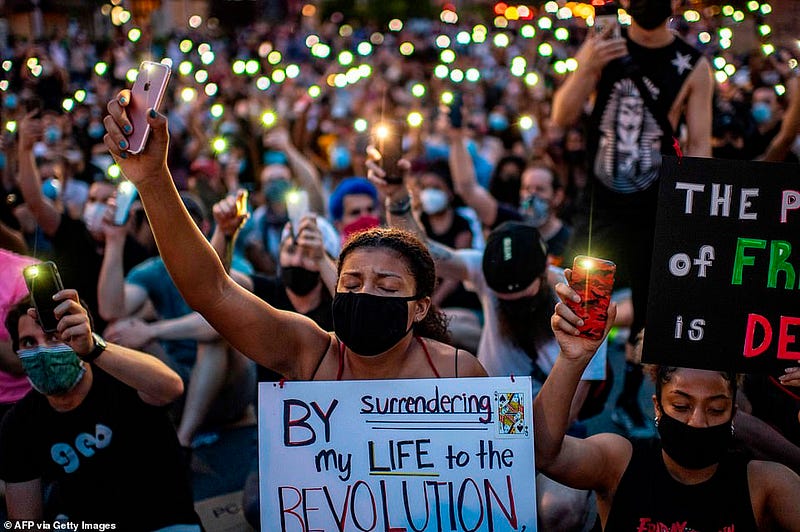
Rapid changes and events happened so fast over the past few weeks. We’ve seen an outpour of support and community as we try to rebuild a better future.
Two thousand cities and towns have risked the dangers that coronavirus poses — to take a stand — because enough has been enough. Dozens of countries have shown an incredible amount of strength and unity as thousands have taken to the streets in solidarity — to empathize with the outrage in America. Witnessing these images send chills up the spine and has never felt more unifying and powerful.
All eyes are on the U.S. because our country has set the sociopolitical tone of the world for centuries.
Politicians have enacted changes. Celebrities have donated millions. Corporations are being called out for their lack of diversity and tone-deaf approaches. Confederate statues are being removed from various landmarks around the U.S.
Plus — the unthinkable yet incredible efforts that are taking place in Seattle’s autonomous zone with CHOP (Capitol Hill Occupied Protest). Things are changing, and while we don’t know what the outcome will be, it’s better than staying stagnant and watching our country repeat the same mistakes repeatedly.
When you put it all together — this is an awakening — a moment that will go down in the history books.
We can’t take our eye off of the target. There is so much work to be done; all we can do is keep doing the work.
Assemble. Donate if you can. Sign petitions that enact changes and reform which go to politicians and legislative branches. Embrace and support Black and Brown causes, organizations, and businesses.
Just do something. Because to do nothing is unacceptable and complicit.
Vote! It’s never been so vital that we ensure our voices and opinions matter. Vote for politicians that align with your values. Remember that local elections are just as important — if not more — than presidential elections. Our local elected officials are the ones who determine local laws, policies, and budgets that affect us the most.
Additionally, local elections account for our district attorneys and state judicial branches. Local politicians influence our day-to-day lives and decide how our public safety is managed. They determine how our police officers are trained and are monitored towards accountability.
It’s essential to take the time and do the research. We need to ensure we voting for politicians who will stand on the right side of history. We have to vote as if our livelihoods depend on it — because it does.
We the people, of the United States of America, are stuck at a fork in the road.
To the left — we allow our mouths to be muzzled, ignore systemic injustices, and remain silent and complicit.
To the right — we take part in the revolution to tackle this problem head-on so that we stand on the right side of history.
The choice is ours. So, what will it be?

